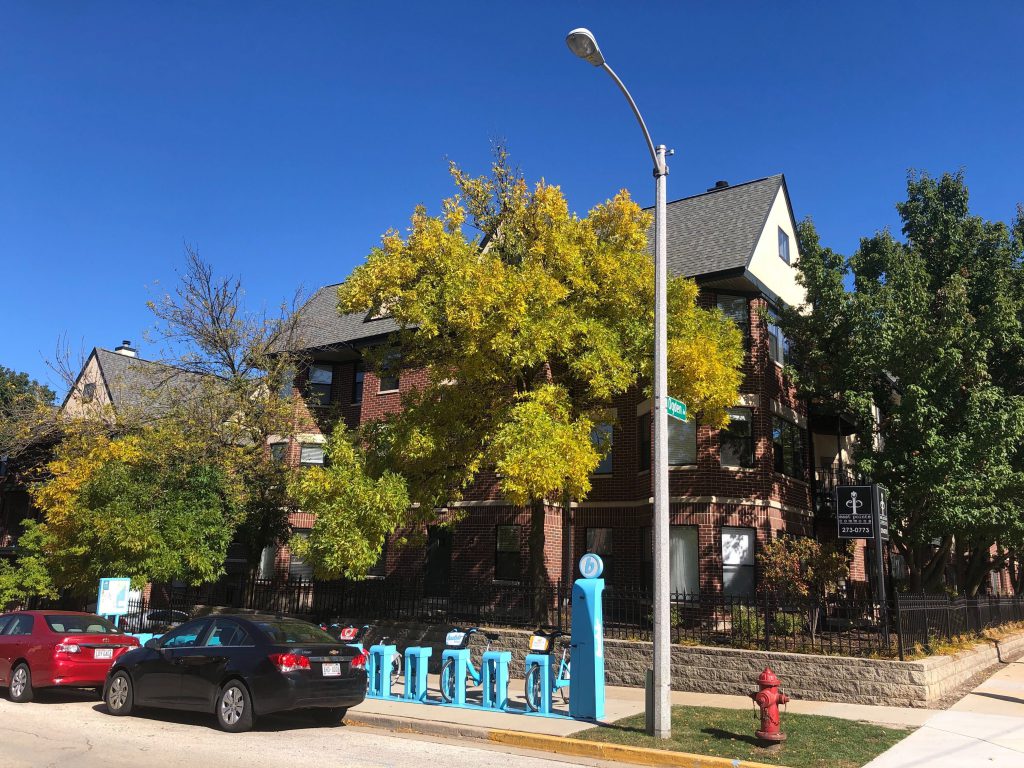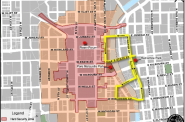New Street Lighting Fee Will Be Levied
Look for it on your next water bill. Fee will pay for more city electricians.
Milwaukee property owners will see a cost increase on their next quarterly water bill.
The bill, technically the Milwaukee Municipal Services Bill, is used to assess fees for everything from water usage to snow removal. Now you can add street lighting to the mix.
The average homeowner will pay $10 per quarter, calculated as $1.01 per foot of street frontage annually. But all properties, including tax-exempt properties, will be assessed the fee. The only exempt properties are those on city streets without street lights. Homes on corner lots will pay only for the shorter side of their property.
The data provided by the Department of Public Works on its street light outage restoration turnaround time paints a clear picture of the need for more resources for street lighting.
From 2013 to 2017, electricians restored 99% of all outages within 24 hours. But that dropped to 91% in 2018, 82% in 2019 and 72% in 2020.
As of late January, the city had 83 funded positions, but only 55 are staffed by journeyman electricians. Seventeen of those electricians are retirement eligible by August. In 2017 the vacancy rate was 3.6%, in 2020 it had increased sixfold to 21.7%.
An apprenticeship program within the department helps train from within, but the program takes four years to complete and the city still loses electricians once they’re licensed. All work must be completed by journeyman electricians.
The department has conducted 14 different recruitment efforts over the past three years, but only hired seven new staff members. It just concluded its first recruitment process with the new salary structure.
The fee would raise approximately $9.7 million, approximately $1.2 million of which would pay for the raises.
But adding new electricians won’t immediately stop the outages from occurring. As the recent freeze-thaw cycle proved, the city’s aging lighting infrastructure, some of which is over 100 years old, is vulnerable to disruption.
Approximately 40% of Milwaukee’s street lights are powered by pre-1930s series circuitry (similar to old Christmas tree string lights where a single bad light takes down a whole strand). Much of it lacks any insulation.
In brief, fewer and fewer people are being assigned more and more work.
Adding more electricians will create more staff time to replace the circuits with modern multiple circuits, as well as replacing the lights themselves with energy-efficient LED lights.
As the city adds LED lights it would see its $3.5 million street lighting electrical bill reduced. Conversion is already underway, with new lights yielding a 70 percent energy cost savings. The savings would be used to pay for increased circuitry upgrades.
The circuitry upgrades, currently on a 30-year pace, would be cut to 11 to 14 years.
Changes include not only replacing circuits, but wiring that is buried underground without insulation. An improvement in street light reliability is expected.
A January budget office presentation estimates that it will take between 12 and 18 months for the impacts to be apparent. “The problem is not going to be fixed overnight,” said city fiscal planning specialist Bill Christianson in a presentation to the Public Works Committee.
The fee only covers the cost of operating and maintaining the lights. It does not cover the capital costs of replacing the infrastructure. It also does not cover costs related to traffic lights.
Switching funding from the state-capped property tax levy to a fee will create more room in the budget to pay for capital costs. It also creates a more equitable charge.
A dedicated fee also avoids political fights over funding the lights. In 2019 Mayor Tom Barrett proposed to shorten the period street lights were on each day by 10 minutes, a move that was estimated to save $210,000. The council rejected the change.
The city’s budget is currently strained not only because of the pandemic, but because of a steady decline in state shared revenue and a looming need to increase its annual pension fund contribution by over $60 million starting in 2023. The city is prevented by state law from levying its own sales or income tax.
But despite the fiscal boost it would give city finances and the long-term improvement to lighting reliability, not everyone on the council is happy with the plan.
“If you want to consider me a wet blanket, then you can,” said Alderman Mark Borkowski, a frequent critic of the proposal. “The bottom line is none of you guys take the phone calls from the citizens who are very, very angry. They look at their bills. I still get calls on the snow and ice removal [fee].”
“It’s the very average citizen who is going to get nailed again, under the guise that we have all these non-profits on easy street,” said Borkowski.
He said the hiring problem wasn’t limited to just electricians. “We are about a year or two away from an employee crisis,” said Borkowski.
“We are going to wait until the LED savings comes around until we fix our wiring?” said Borkowski. “I am not going to even bring that up to a constituent because it’s almost insulting.”
At least two council members are excited about a side effect of the fee.
Under the revised pay structure, City of Milwaukee electricians that reside in Milwaukee are now paid $40.70 per hour (95% of the prevailing wage). Non-residents make $39.51 (92.2%).
“Those are significant wage levels that create opportunities for young people. You don’t need a college degree, you need a high school degree. You need basic skills, but those can be taught,” said Alderman Robert Bauman in January.
Alderman Russell W. Stamper, II asked that the city market the job opportunities alongside the new fee, and note that the two are related. But Stamper joined Borkowski in calling for faster action and fewer fees.
If you think stories like this are important, become a member of Urban Milwaukee and help support real, independent journalism. Plus you get some cool added benefits.
Political Contributions Tracker
Displaying political contributions between people mentioned in this story. Learn more.
- December 31, 2020 - Tom Barrett received $500 from Jeff Polenske
- December 2, 2018 - Tom Barrett received $400 from Jeff Polenske
- May 25, 2017 - Tom Barrett received $400 from Jeff Polenske
- February 1, 2016 - Tom Barrett received $400 from Jeff Polenske
























…” all properties, including tax-exempt properties, will be assessed the fee.”
This is welcome news. Are there other city services that are passed on to exempt properties?